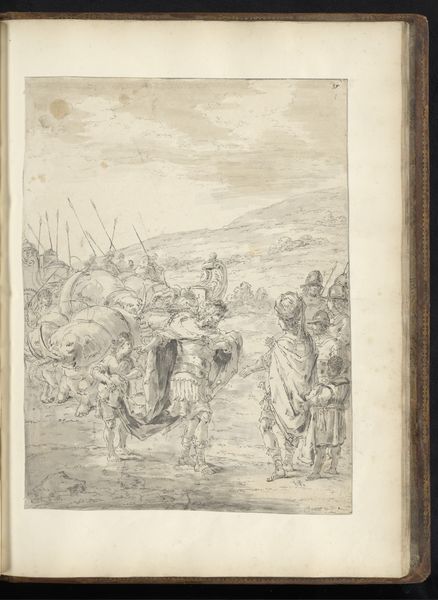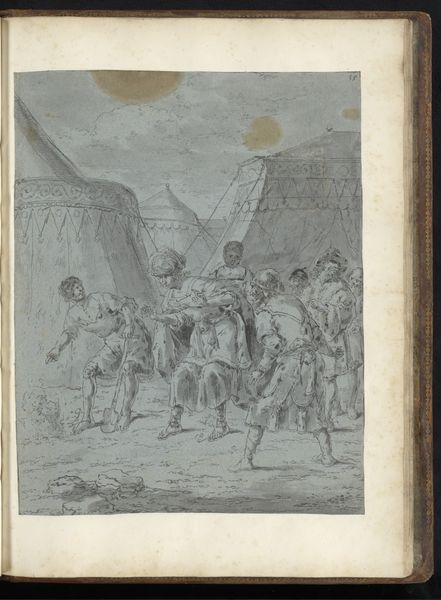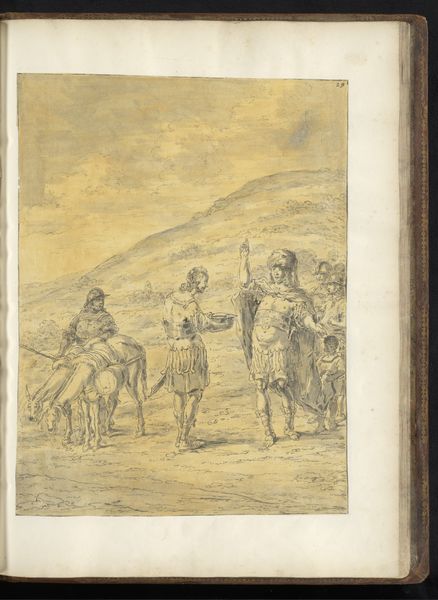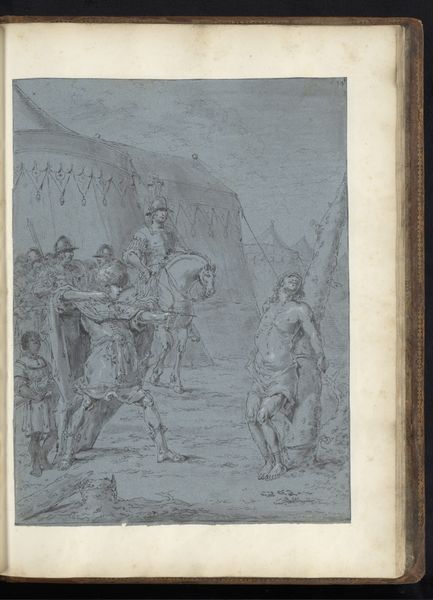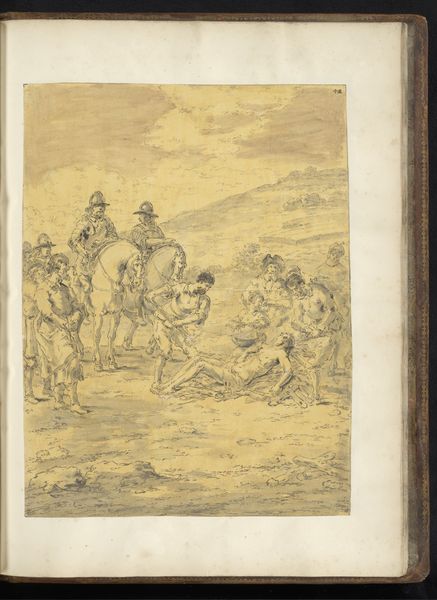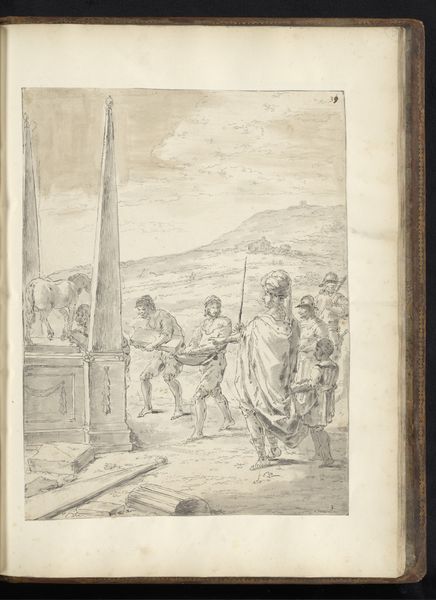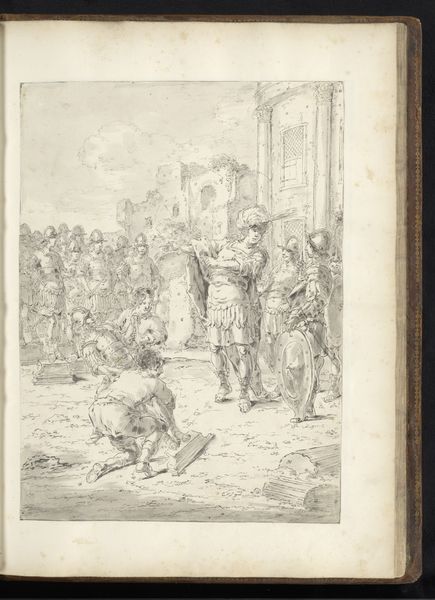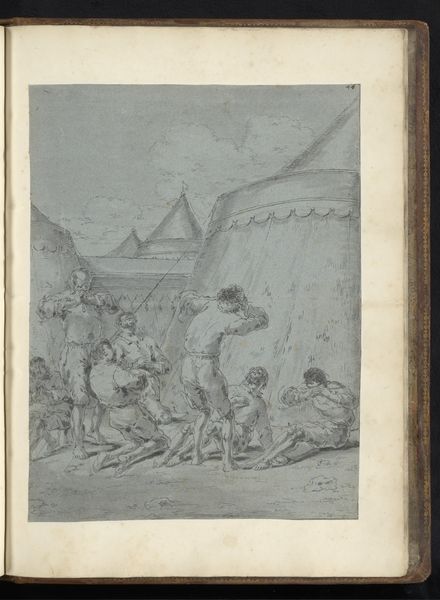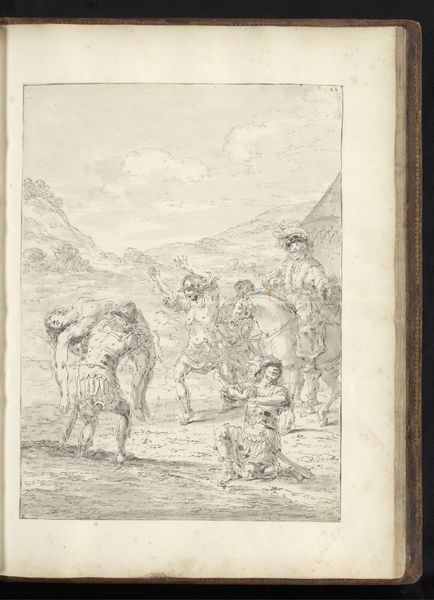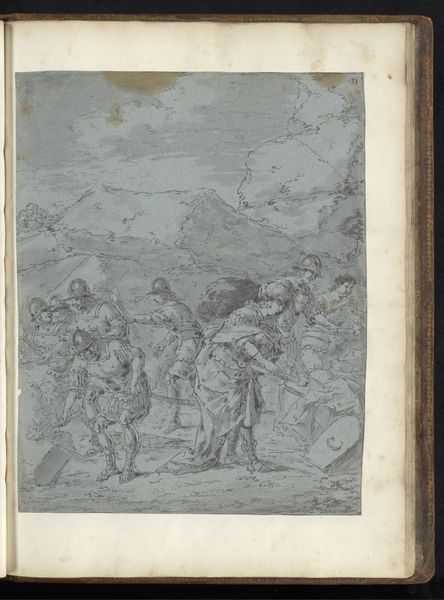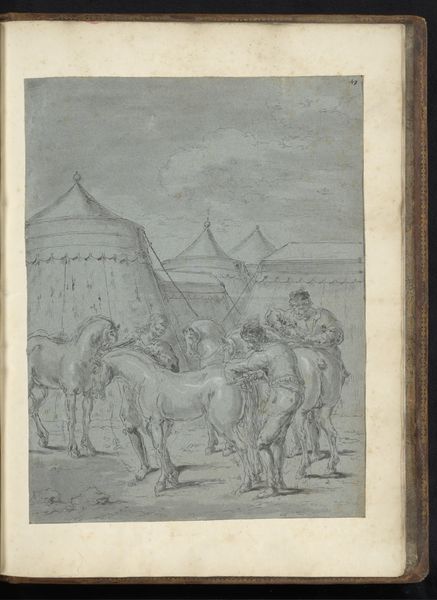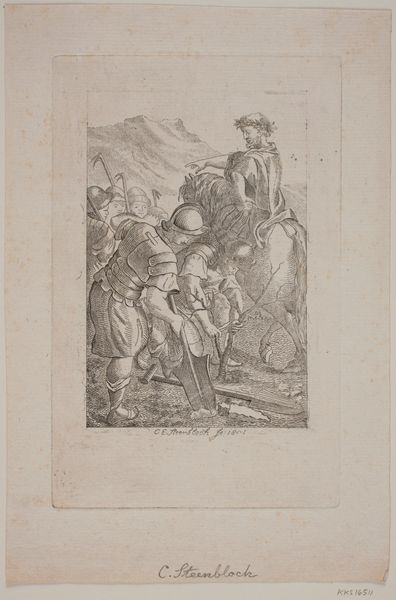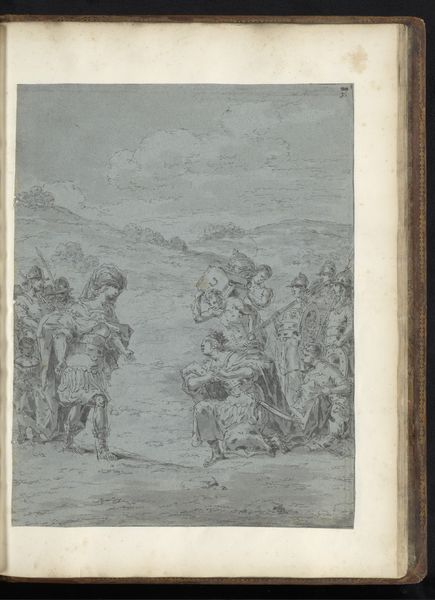
Alexander de Grote verdeelt de buit na zijn overwinning op de Perzen c. 1655 - 1665
0:00
0:00
leonaertbramer
Rijksmuseum
drawing, paper, ink
#
drawing
#
narrative-art
#
baroque
#
figuration
#
paper
#
ink
#
history-painting
Dimensions: height 413 mm, width 301 mm
Copyright: Rijks Museum: Open Domain
Curator: Here we have a drawing titled, "Alexander the Great Dividing the Spoils after his Victory over the Persians," created circa 1655-1665 by Leonaert Bramer. It's rendered in pen and brown ink on paper and is currently housed here at the Rijksmuseum. What are your initial impressions? Editor: It's…strikingly muted for such a triumphant scene. The monochrome palette lends it a sense of grimness, almost like a ledger of conquest rather than a celebration. There’s a weariness in the figures, even Alexander on horseback seems less commanding, more burdened. Curator: That’s a perceptive reading. Bramer was working within the Dutch Baroque tradition, but his history paintings often subvert the glorification of war, hinting at the costs behind these supposed victories. We have Alexander on horseback, pointing as spoils are brought forward, while people carry off heavy treasure chests. Editor: It’s interesting how the drawing captures this intersection between power, labor, and plunder. Who benefits and at what cost? The soldiers in the foreground, burdened with the loot, their expressions are obscured. There is definitely something tragic in the casualness of conquest and the treatment of the conquered. Curator: Absolutely, it provokes questions about who writes history and from what perspective. Alexander is usually lionized, but Bramer's work avoids idealization. It depicts a moment in time marked by its social consequences of colonialization and plundering. Editor: Right, consider the context of its creation, mid-17th century. The Dutch Republic was building its own empire through trade and conquest. A work like this then invites a comparison between Alexander’s campaign and Dutch colonial activities, which underscores questions of ethics and accountability in the context of global power. The treasure also seems very material – not symbolic of a deeper achievement or a more significant event. Curator: And how the scene is designed – Bramer directs our gaze away from Alexander’s central heroic figure toward the people hauling the bounty. Perhaps suggesting the importance of looking closely at who’s carrying the weight of empire, literally and metaphorically. Editor: The detail is also significant – consider the faces etched with exhaustion, the bodies strained with effort, it shifts the grand narrative to the individuals impacted and makes them seem burdened. I agree this historical moment depicted resonates across time in terms of its brutal legacy. Curator: I think Bramer offers an opportunity for contemporary viewers to contemplate historical parallels. It serves to highlight how art interprets history while raising important political questions for us.
Comments
No comments
Be the first to comment and join the conversation on the ultimate creative platform.
